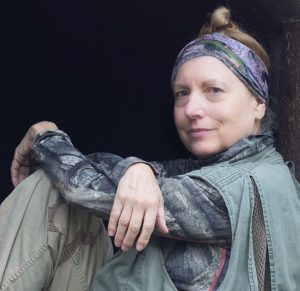 Irene’s presentation will explore the Tangier Islands, Virginia located just south of the Maryland line, in the middle of the Chesapeake Bay. It is actually a series of small islands connected by narrow bridges spanning marshes and tidal creeks. From the mainland, it can only be reached by boat or small plane. On its narrow roads, golf carts and bicycles replace cars as the primary mode of transportation. It is a charming community of shop owners and waterman, with many inhabitants making their living on the water as did their ancestors, oystering and crabbing. Recently, Tangier Island has been the focus of news stories as a possible casualty of climate change and sea level rise as each year flooding on the island becomes more frequent and erosion increases. This presentation is a visual journey, compiled from photos that I have taken over the years. It explores life on Tangier and paints a picture of the island, waterman community, and the wildlife that inhabits its marshes, lagoons, and tidal guts. Includes tips on photographing the waterman community and wildlife.
Irene’s presentation will explore the Tangier Islands, Virginia located just south of the Maryland line, in the middle of the Chesapeake Bay. It is actually a series of small islands connected by narrow bridges spanning marshes and tidal creeks. From the mainland, it can only be reached by boat or small plane. On its narrow roads, golf carts and bicycles replace cars as the primary mode of transportation. It is a charming community of shop owners and waterman, with many inhabitants making their living on the water as did their ancestors, oystering and crabbing. Recently, Tangier Island has been the focus of news stories as a possible casualty of climate change and sea level rise as each year flooding on the island becomes more frequent and erosion increases. This presentation is a visual journey, compiled from photos that I have taken over the years. It explores life on Tangier and paints a picture of the island, waterman community, and the wildlife that inhabits its marshes, lagoons, and tidal guts. Includes tips on photographing the waterman community and wildlife.
BIO
 For more than 35 years, Irene has shared her photographic experiences and love of nature with thousands of individuals through more than 300 photo classes, workshops, lectures, and tours in both the U.S. and abroad including Kenya, Iceland, Newfoundland, the Falkland Islands, the Brazilian Pantanal, South Dakota Badlands, Bosque del Apache, Chincoteague NWR, Tangier Island, etc. Program sponsors have included zoos, nature centers, camera clubs, and conservation organizations such as National Wildlife Federation and the Assateague Island Alliance.
For more than 35 years, Irene has shared her photographic experiences and love of nature with thousands of individuals through more than 300 photo classes, workshops, lectures, and tours in both the U.S. and abroad including Kenya, Iceland, Newfoundland, the Falkland Islands, the Brazilian Pantanal, South Dakota Badlands, Bosque del Apache, Chincoteague NWR, Tangier Island, etc. Program sponsors have included zoos, nature centers, camera clubs, and conservation organizations such as National Wildlife Federation and the Assateague Island Alliance.
For many years, she has taught photography classes at Johns Hopkins University and other educational institutions and have written “How To” articles on nature photography for national publications such as Outdoor Photographer and Birding.
Her images have appeared in magazines, calendars, and books published by National Wildlife Federation, Natural History Society, Audubon, and Sierra Club. Credits include the book, “Chincoteague National Wildlife Refuge, an Ecological Treasure.”


